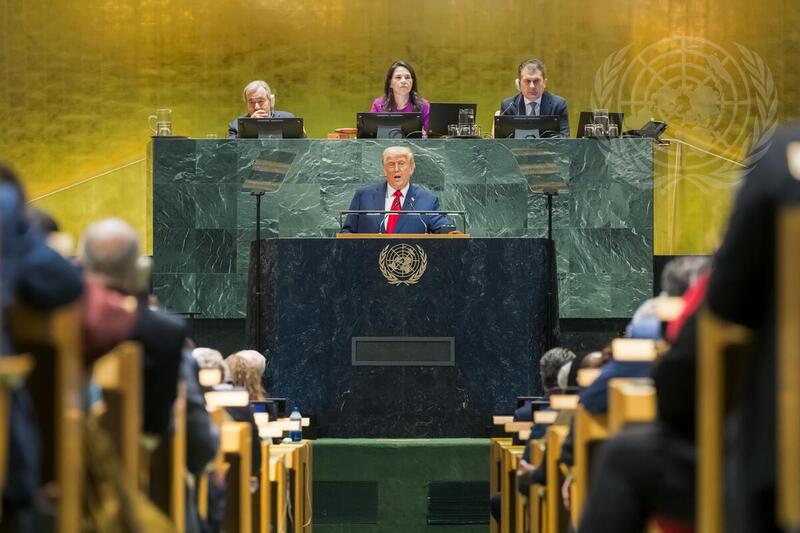[ printer-friendly
PDF version ]
i n v e s t i g a
t i o n
Plan Puebla-Panama: Done Deal or Emerging Flashpoint?
As Mexico’s Resource-Land Grab Wins Financial Backing, Public Opposition Grows
by Wendy Call |
April 9, 2002
Even before his December 2000 inauguration as Mexico’s president, Vicente
Fox was touting a massive industrial development plan for the southern
states of Mexico and all of Central America.
Three months earlier, the front page of Las Noticias in the southern
Mexican state of Oaxaca announced that Fox would travel to Central America
to promote the Free Trade Area of the Americas and to push for "an
ambitious regional development proposal." Within a week he was in
Guatemala City, dubbing his new proposal "The Three P, Plan Puebla-Panama,"
to denote the area it would encompass, which includes all seven Central
American countries as well as the southern Mexican states of Campeche,
Chiapas, Guerrero, Oaxaca, Puebla, Quintana Roo, Tabasco, Veracruz, and
Yucatan.
While Central American government leaders were fairly quick to support
the Plan Puebla-Panama (PPP), many residents of the region are increasingly
skeptical.
According to Salvadoran economist Raúl Moreno, President of the
Center for the Defense of the Consumer, in the post-PPP world "Central
America is going to be a superhighway, filled with huge container trucks
[serving] the transnational corporations. All of us will be by the side
of the highway, selling snacks and fruit," he says, miming the vendors
being run over by trucks.
Indeed, the PPP certainly aims at meeting the transit needs of global
commerce. With the Panama Canal now extremely overburdened and out of
U.S. control, transnational corporations are searching for new regional
shipping routes. In the last few years, Mexico, Nicaragua, Honduras, and
El Salvador have all floated proposals for highway, rail and even water-based
inter-oceanic links. The PPP includes several Atlantic-to-Pacific connections,
as well as north-south highways linking central Mexico to Panama along
both coasts.
Fox has assembled an impressive sales team for his plan, headed by Enrique
Iglesias, director of the Inter-American Development Bank (IDB). Other
members of the PPP Financing Commission include representatives of the
International Finance Corporation, World Bank, United States Agency for
International Development, Danish Aid for International Development, and
several UN agencies.
The commission has made slow but steady progress promoting PPP, in spite
of the U.S. war and economic recession.
Just one week after the Sept. 11 attacks on the United States, Mexico’s
Foreign Trade Bank (Bancomext) announced a $300 million investment in
the PPP area, half for hotel development and half for textile and manufacturing
industries.
In the following months, Japanese investors agreed to support a huge
energy interconnection program in Central America, based on fossil fuels
and big dams, and the Central American Economic Integration Bank (CABEI)
announced a $135 million loan to El Salvador for port and highway construction.
The Mexican government’s 2002 budget for the PPP is $743 million, more
than double last year’s federal expenditures in southern Mexico. More
than 80% of this total is devoted to highway, port, and other infrastructure
development.
While the IDB and CABEI—key PPP promoters—talk about "human
and sustainable development" as important elements of the plan, the
budget numbers make it clear that industrial infrastructure is the priority.
Public information on the PPP indicates the plan has three primary goals:
1) increase the transit and industrial infrastructure of the region, improving
the capacity for export industries; 2) catalyze a shift of the region’s
economy from an agricultural to a maquiladora base; and 3) expand private
control over the region’s vast natural resources.
In some ways, southern Mexico has more in common with Central America
than it does with central and northern Mexico. Oaxaca and Honduras have
the same illiteracy rate: nearly one quarter of the adult population.
Yucatan has a higher infant mortality rate than El Salvador. Economically,
southern Mexico’s most important export, like that of some Central American
countries, may well be the thousands of young people that migrate each
year to northern Mexico and the United States in search of work.
Under U.S. pressure to slow migration, Fox hopes the PPP will appease
by drawing maquiladoras to the south and keeping more migrants at home.
This posture has earned him criticism as a lackey for U.S. policymakers.
It has also drawn fire for promoting the same economic privatization model
espoused by the long-ruling Institutional Revolutionary Party (PRI) that
Fox defeated in the July 2000 presidential elections.
In fact, the PPP was originally a proposal developed by the PRI. Former
PRI official (and current Fox administration authority) Santiago Levy
first presented the general idea for the PPP a month before Fox’s electoral
victory.
Levy’s design included securing more private property for development
through expansion of Procede, the acronym for the federal government’s
Ejido Rights Certification and Urban Lots Title Program. The nine-year-old,
World Bank-conceived program converts communally owned trust land into
individual, private holdings, thus allowing the new title-owners of small
subsistence plots to sell and helping monied investors to amass large
properties.
Land privatization continues to underpin Fox’s PPP and is the key to
achieving its goals of expansion of manufacturing and increased private
control over the area’s natural resources. So much is this the case that
Mexico’s Agrarian Reform Secretariat has said that land will be expropriated
from indigenous and peasant communities, if necessary, to implement the
PPP.
As the Mexico chapter of the primary public document on the PPP observes,
"the region’s fishery, agricultural, and oil resources are of high
national importance… Some of the resources of the region are not sufficiently
exploited."
Ultimately, the PPP’s success depends on indigenous Mexicans’ willingness
to abandon their homes and farms in the countryside—and it’s not at
all evident they’d be willing to do that.—
The Zapatistas and many other regional organizations of indigenous people
took up the anti-PPP banner shortly after the plan was announced. At a
February 2001 rally of more than 10,000 people in Oaxaca City, Zapatista
Army Sub-Commander Marcos received a rousing cheer when he declared, "There
will be no plan nor project, by anyone, that does not take us into account:
no Plan Puebla-Panama…nor anything else that means the sale or destruction
of the indigenous peoples’ home."
Wendy Call lives and writes in the Isthmus of Tehuantepec, in southern
Mexico, as a Fellow of the Institute of Current World Affairs. Before
moving to Mexico two years ago, she worked for 10 years for social change
organizations in Seattle and Boston. She can be reached at wendycall@world.oberlin.edu
Links:
Web sites
"Plan Puebla-Panama"
| Global Exchange
http://www.globalexchange.org/campaigns/mexico/ppp/ppp.html
"Plan Puebla-Panama"
| Inter-American Development Bank
http://www.iadb.org/ppp/
"Plan Puebla-Panama"
| Presidential Office of Mexico
http://ppp.presidencia.gob.mx/PPP/
"Plan Puebla-Panamá"
| Red Mexicana de Acción Frente al Libre Comercio"
http://www.rmalc.org.mx/ppp.htm
Centro de Investigaciones Económicas y Políticas de Acción Comunitaria (Center for Economic and Political Research for Community Action) (Spanish with some English)
http://www.ciepac.org/ppp.htm
UCIZONI (Association of Indigenous Communities in the Northern Zone of the Isthmus) and the Grupo de Trabajo Colectivo del Istmo (Collective Working Group of the Isthmus) (Spanish only, use Internet Explorer only with this page)
http://www.mesoamericaresiste.org/
EZLN (Spanish only)
http://www.ezln.org/
Inter-American Development Bank (English and Spanish)
http://www.iadb.org/ppp/
From this homepage for Yahoo in Mexico, click on "noticias" and then you can do a search for media coverage in Spanish of the PPP. Generally at least one article a day is posted to this site. (Spanish only)
http://www.yahoo.com.mx/
Articles and article collections
A general article about the Plan Puebla Panama, "Plan Puebla-Panama: Done Deal or Emerging Flashpoint? As Mexico’s Resource-Land Grab Wins Financial Backing, Public Opposition Grows."
http://www.americaspolicy.org/articles/2002/0204puebla.html
A special issue of borderlines , the magazine of the Interhemispheric Resource Center (in New Mexico– http://www.irc-online.org/ ) about the Plan Puebla Panama. (English)
http://www.us-mex.org/borderlines/updater/2001/aug7ppp.html
Dr. Ana Esther Ceceña, "El Dictamen del Senado, a favor del Plan Puebla Panamá y no de los derechos indígenas."
http://www.ezln.org/san_andres/index.html
Sally Burch, "The Mesoamerican Isthmus: Globalization, Ecology and Security." (English)
http://alainet.org/active/show_text.php3?key=1154
An article from the Texas Observer about the impacts of the PPP on the communities that live in the region. (English)
http://www.texasobserver.org/showArticle.asp?ArticleFileName=020201_f3.htm
A brief, basic article from British journal The Ecologist , about the PPP. (English)
http://www.chiapasnews.ukgateway.net/news/010528.html
A very good collection of articles about the impacts of "free" trade on Mexico. Scroll half-way down the page for an article by Carlos Beas Torres, director of UCIZONI (see above), about the history of industrial development programs in Mexico’s Isthmus of Tehuantepec. (Articles download in Acrobat format, in English and Spanish)
http://www.rmalc.org.mx/tratados/tlcan/libro_impactos.htm
"Plan Puebla-Panama:
Done Deal or Emerging Flashpoint?" | Americas Program, April 9, 2002
http://www.americaspolicy.org/articles/2002/0204puebla.html
"PPP Plays into
Washington’s Hand for Latin America" | borderlines UPDATER ,
August 7, 2001
http://www.us-mex.org/borderlines/updater/2001/aug7ppp.html#ppp
"Development
in Mexico" | Americas Program, October 2001
http://www.americaspolicy.org/reports/2001/bl82.html
"Fox Strives
to Spread Maquiladoras South" | borderlines UPDATER , August 7, 2001
http://www.us-mex.org/borderlines/updater/2001/aug7ppp.html#fox
"PPP Plays
into Washington’s Hand for Latin America" | borderlines UPDATER ,
August 7, 2001
http://www.us-mex.org/borderlines/updater/2001/aug7ppp.html#ppp
Published by the Americas
Program at the Interhemispheric Resource Center (IRC). ©2002. All
rights reserved.
Recommended citation:
Wendy Call, "Plan Puebla-Panama: Done Deal or Emerging Flashpoint?"
Americas Program Investigative Article (Silver City, NM: Interhemispheric
Resource Center, April 9, 2002).
Web location:
http://www.americaspolicy.org/articles/2002/0204puebla.html



